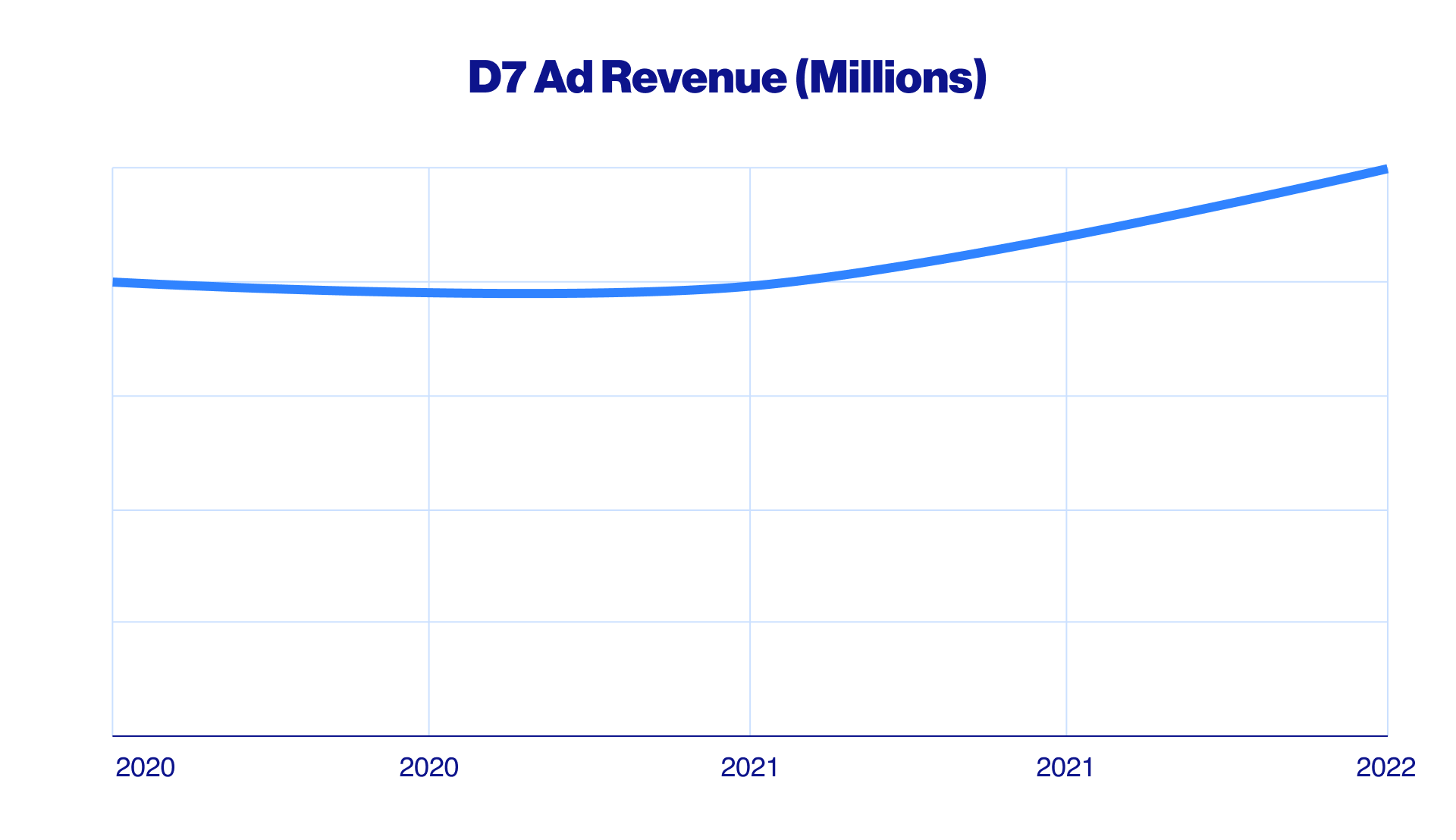Now that players’ budgets are tightening, it’s becoming more important for midcore and hardcore games to diversify their monetization strategy beyond in-app purchases. According to data.ai, consumer mobile gaming is on a downward trend - it dropped 5% in 2022, and will drop another 3% in 2023 to $107 billion.
How do developers fill that gap in monetization? They can do it in a way that won’t require players to spend a penny: carefully placed ads.
In fact, based on Unity LevelPlay data, ad revenue for in-app purchase based genres (RPG, casino, puzzle, simulation, lucky rewards) has been steadily on the rise since 2020. As consumer spending continues to decelerate, we’ll likely see a major uptick in 2023.

As you explore an ad-based monetization model for your mid-core or hardcore game, it’s worth determining which ad units get you the most bang for your buck. Based on our data, the answer is clear: rewarded videos and offerwalls. Here are four best practices to get started.
1. Make your offerwall stand out
It’s likely easiest to start with the ad unit most similar to the in-app purchase model: the offerwall. Like in-app purchases, this mini-store offers valuable hard currency to users. But unlike in-app purchases, no cash is required - just the user’s time.
The more accessible you make the offerwall to users, the bigger your revenue potential - so make sure your traffic drivers get users’ attention by putting them in the right spots. Here are the most effective traffic driver locations that maximize your offerwall engagement:
- Home screen: The best traffic drivers are the most visible ones - so your game’s home screen is an ideal spot to promote your offerwall, and increase impressions as a result.
- Store: The store is filled with users already looking to increase their hard currency, making it a great place to tell users they can get this currency for free.
- Breaks in gameplay: Placing traffic drivers during natural breaks in the gameplay (out of currency, end of level) can improve the user experience by giving players currency when they need it most.
Start small with new placements
The other critical ad unit to include in your ad monetization strategy is rewarded video - they’re completely optional, and offer players an enticing reward for a short amount of their time. They work well with every type of game - including traditionally in-app placement-based games, because their soft currency doesn’t interfere with paid hard currency. And the best part is - because offerwalls and rewarded videos work with different currencies - you can implement them both at the same time.

During implementation, we’ve seen one common mistake: adding too many ads right away. If you build a complex placement system and add it to a game, it will be extremely hard to analyze its performance. This is especially true in in-app purchase-based games - since the deeper a game economy is, the harder it will be to attribute certain successes to certain placements. That’s why we recommend starting with one or two placements.
As you set your ad placement strategy, make sure your ads are checking all the boxes:
- Optimizing exposure (e.g. placed in busy areas like the main screen)
- Helping players reach their goals (e.g. offering extra soft currency to upgrade a weapon).
Once you see your placement is performing well, you can double-down on your strategy and start adding more rewarded videos.
Balance your game economy
As you’re adding new soft currency placements to your game, like rewarded videos, there’s a chance they can impact your in-game economy - so you need to adjust it accordingly.
Let’s say you’ve added a new rewarded video placement - even though they’re optional for users, you should always assume that every player is watching them, so you can balance your economy accordingly.
The chart below, for example, shows how you can always incorporate ads into your economy without impacting the total amount a player receives per level. With each amount of currency your ad is offering, you can simply reduce that amount from your end-level winnings - keeping everything balanced. For example, in Level 4, users can win 20 coins through in-app purchases. If you incorporate ads, you’ll need to split that 20 into 10 for in-app purchases and 10 for ads.

It’s important to remember that your new placements should only offer soft currency, not hard currency. This way, you can avoid cannibalizing your in-app purchases and the hard currency they offer.
A/B test your placements as you go
Once you’ve added a new placement (rewarded video and/or offerwall) and adjusted your economy accordingly, it’s time to test how your new ad system is working and make adjustments as needed.
Let’s say you added a new offerwall traffic driver and rewarded video placement to the home screen. Now you optimize. How’s your engagement rate? For the rewarded video placement, is the amount of currency affecting people’s interest in making in-app purchases?
By understanding how players are engaging with your ads, you can adjust accordingly - and eventually apply your insights to any new placements you add.
Once you’ve found a baseline placement (rewarded video and/or offerwall) that meets your KPI goals and you’re ready to A/B test, start with the basics:
- The ad’s location in the game (e.g. home screen vs. store)
- The placement’s design and messaging
And, for rewarded video placements, go even deeper by testing:
- Currency type and amount
- Capping and pacing the ad’s frequency
To accurately measure A/B test results, make sure to only perform one test at a time on any given placement. Your best measuring tools are retention and ad revenue per user (ARPU). If you’re making changes that boost ARPU while retaining high retention, you’re on the right path.
Ultimately, as the industry adapts and changes, developers - particularly those who make traditionally IAP-based games - can adapt accordingly. Offerwalls and rewarded videos are key for increasing monetization, and with the right implementation strategy and A/B tests to optimize performance, there’s only room to improve.




